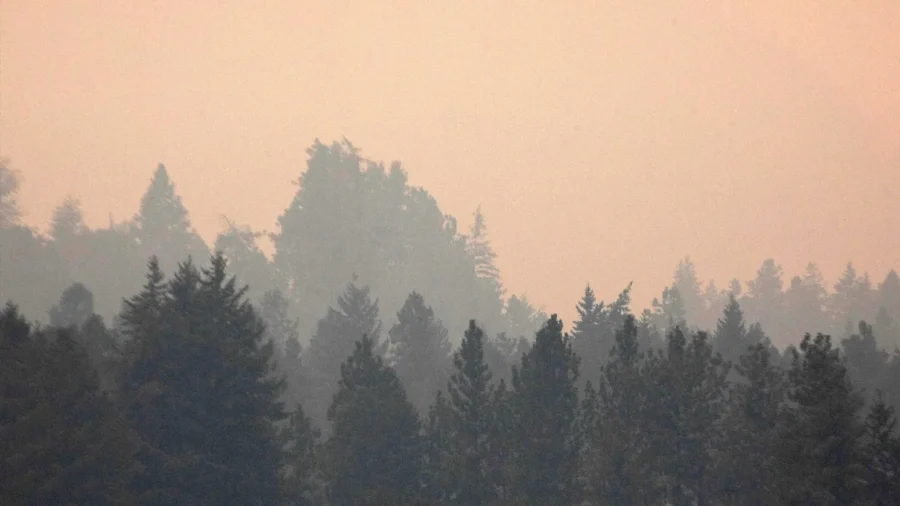Canada is witnessing a series of major wildfires that have prompted evacuation orders in British Columbia and raised air quality alerts in several regions in the United States that are near the Canadian border.
According to the Canadian Interagency Forest Fire Center, there are currently 137 active forest fires all over Canada. The center listed 378 of the fires as burning “out of control,” as Canada braces for the start of its forest fire season.
Currently, an evacuation order is in effect in the Fort Nelson region of British Columbia and the Fort McMurray and Saprae Creek regions of Alberta.
The evacuation order issued the Northern Rockies Regional Municipality for the town of Fort Nelson and area said its wildfire is “a threat to life & safety.” Residents were asked from midday May 12 to evacuate immediately to the local Fort St. John Reception Centre at the North Peace Arena.
“If you have the means to travel further, additional Emergency Reception Centres are open at: Prince George: Exhibition Park, 2187 Ospika Blvd S. Located beside Ice Oval. Access is from the 18th Avenue entrance. Dawson Creek: Sudetan Hall, 1901 Alaska Highway,” the evacuation order added.
Cliff Chapman, the British Columbia Wildfire Service director of provincial operations, posted an update on the wildfires focusing on the Parker Lake area, saying that “the wind is going to be sustained and it is going to push the fire towards the community. Escape routes may be compromised and visibility will be poor as the fire continues to grow.”
Fire Behaviour Specialist Ben Boghean said the next 48 hours would present challenging conditions for the Northern Rockies Regional Municipality due to “forecasted westerly winds and extremely dry and volatile fuels in the area.”
“This region has experienced multiple years of drought with a below-normal snowpack this past winter. As a result of this, our forests in the Fort Nelson zone are very receptive to new fire ignitions and rapid rates of spread. The Parker Lake wildfire ignited on May 10th during a strong wind event and grew eight kilometers [nearly five miles] in four hours after detection.”
He said that forecasters are expecting to see more favorable conditions on Tuesday, with strong winds forecast to ease. “But there’s still going to be a threat in the area until we get some rain,” he added.
While the province of Alberta has been witnessing “lower fire behavior,” an evacuation alert remains in place for the regions of Fort McMurray, Saprae Creek Estates, Gregoire Lake Estates, Fort McMurray First Nation, Anzac, and Rickards Landing Industrial Park.
‘Air Quality Alert’ in the US
The array of wildfires has also left its mark on the United States, impacting air quality in the states of Montana, North Dakota, South Dakota, and Minnesota. The current fire and smoke map records the air quality of Minnesota and parts of Wisconsin as “unhealthy” and “very unhealthy.”
The Minnesota Pollution Control Agency issued an air quality alert, expected to remain in effect until 11 p.m. on May 13. “The affected area includes the Twin Cities metro, Albert Lea, Marshall, Worthington, Rochester, St. Cloud, Winona, Ortonville, Mankato, and the tribal nations of Upper Sioux and Prairie Island,” the alert mentioned.
“Fine particle levels are expected to reach the red air quality index (AQI) category, a level considered unhealthy for everyone, across southern Minnesota. In the red area, sensitive groups should avoid prolonged or heavy exertion and limit time spent outdoors. Everyone should limit prolonged or heavy exertion and time spent outdoors,” the alert further mentioned.

